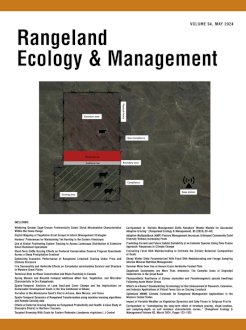Mule deer (Odocoileus hemionus) populations have declined steadily across their geographic range due to a multitude of factors including habitat degradation associated with the encroachment of invasive annual grasses including cheatgrass (Bromus tectorum), medusahead (Taeniatherum caput-medusae), and North Africa grass (Ventenata dubia). These grasses can drive changes in vegetation composition that significantly reduce the quantity and quality of summer mule deer forage. Application of annual grass selective herbicides is a management tool being used in efforts to restore invaded grasslands. We assessed the effect of an imazapic application on mule deer use, home range size, and proportional overlap with treatment areas. We evaluated differences in summer (June–August) use between fifteen 8-ha paired control and treatment plots, comparing responses among pretreatment, 1 yr post treatment, and 2 yr post treatment. Results from tests were statistically insignificant but suggest a weak positive response by mule deer to imazapic-treated areas. Proportional use of treatment plots in the first summer post treatment was 4.4% higher than use of control plots and was greater than pretreatment use of the same plots. In the second summer post application, use of treatment plots decreased and returned to pretreatment levels. Mule deer increased use of treatment plots in alignment with improvements in crude protein and digestible energy content of forage. As annual grasses began reinvading and nutritional quality of forage was no longer higher than the control, use of treatment plots declined and returned to pretreatment levels.
How to translate text using browser tools
17 May 2024
Summer Mule Deer Use of Annual Grass Herbicide-Treated Plots
Trenton D. Gianella,
Dana M. Sanchez
ACCESS THE FULL ARTICLE

Rangeland Ecology and Management
Vol. 94 • No. 1
May 2024
Vol. 94 • No. 1
May 2024
Annual grass
imazapic
Mule deer (Odocoileus hemionus)
Proportional use
Summer




